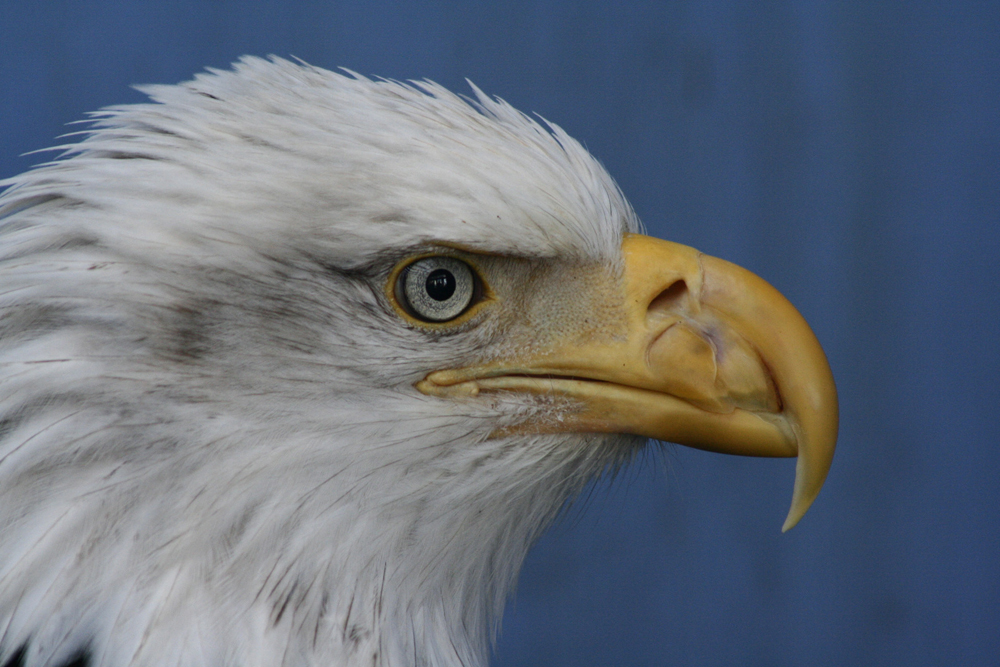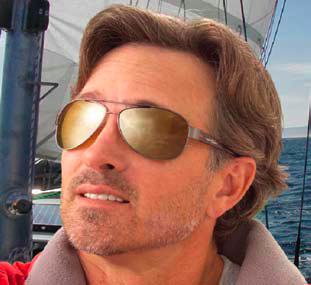
Hawks and other birds of prey have some of the sharpest eyes in the animal kingdom, with the ability to spot a mouse scurrying through brush from perhaps a half-mile away.
These birds owe their legendary visual acuity to several different factors. Hawks and eagles have about five times as many photoreceptors in their eyes as humans do, for example. And raptors' eyes also contain oil droplets that filter out harmful radiation, letting through only specific wavelengths of light.
NASA researchers picked up on the latter fact and used it to humans' advantage. Their work ultimately led to the development of sunglasses that protect against eye damage by blocking out the most harmful wavelengths of solar radiation.
Protecting welders' eyes
In the early 1980s, researchers at NASA's Jet Propulsion Laboratory in Pasadena, Calif., were studying how the human eye is damaged by radiation – both solar radiation and the artificial light produced by lasers and industrial welding operations.
Ultraviolet (UV) light from these sources can harm the human eye in a number of ways. The high-energy wavelengths can cause cataracts, for example, and macular degeneration, which damages the center of the eye and makes it difficult to see fine details.
The JPL researchers learned of the raptors' oil droplets, which protect the birds' eyes and enhance vision at the same time. Intrigued, the scientists developed their own light-filtering system, which employed dyes and tiny particles of zinc oxide. (Zinc oxide, which absorbs UV light, is also found in many sunscreen lotions.)
Get the Space.com Newsletter
Breaking space news, the latest updates on rocket launches, skywatching events and more!
Eventually, the researchers created and commercialized a welding curtain, which blocked out much of the UV light that causes corneal inflammation and long-term retinal damage — so-called "arc-eye" — in many welders, NASA officials said.
The scientists then turned their attention to adapting the technology for sunglasses, so those non-welders among us could reap the same protective benefits. [Photos of the Sun From Space]
Soaking up some (harmful) rays
In short order, a company called SunTiger was formed to market a line of sunglasses based on the NASA hawk-eye breakthrough.

SunTiger eventually became Eagle Eyes Optics, based in Calabasas, Calif. The company's sunglasses block the vast majority of harmful UVA and UVB radiation, as well as similarly damaging high-energy blue light. Blocking out bad light also provides a bonus service — it enhances visual clarity, NASA officials said.
Millions of people now wear Eagle Eyes sunglasses, according to NASA officials. While these folks still can't see as well as hawks, the space-ace technology is helping keep their eyes safe and healthy.
You can follow SPACE.com senior writer Mike Wall on Twitter: @michaeldwall. Follow SPACE.com for the latest in space science and exploration news on Twitter @Spacedotcom and on Facebook.
Join our Space Forums to keep talking space on the latest missions, night sky and more! And if you have a news tip, correction or comment, let us know at: community@space.com.

Michael Wall is a Senior Space Writer with Space.com and joined the team in 2010. He primarily covers exoplanets, spaceflight and military space, but has been known to dabble in the space art beat. His book about the search for alien life, "Out There," was published on Nov. 13, 2018. Before becoming a science writer, Michael worked as a herpetologist and wildlife biologist. He has a Ph.D. in evolutionary biology from the University of Sydney, Australia, a bachelor's degree from the University of Arizona, and a graduate certificate in science writing from the University of California, Santa Cruz. To find out what his latest project is, you can follow Michael on Twitter.
